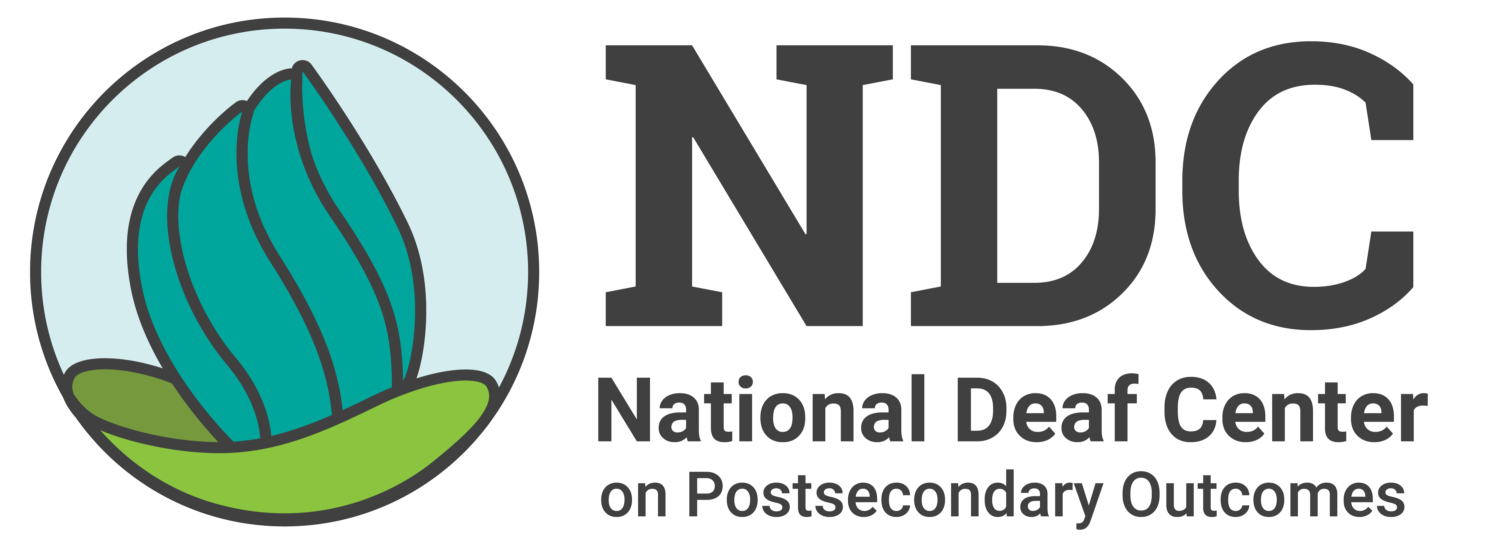Did you know that more deaf women are going to college than deaf men? It’s true! About 6.4% of deaf women are in college compared to 4.2% of deaf men (Bloom, Palmer, Winninghoff, 2024). But overall, not many deaf people…
Type: News
Useful For: Administrators
Categories All News
For deaf youth, summer camps bring opportunities to build relationships, develop their identities, and strengthen skills for the future. Whether they are day camps focused on coding, virtual programs in the arts, or overnight outdoor adventures, research shows that summer…
Type: News
Useful For: Disability Services Professionals
Categories In The News and Opinions, All News
Employment rates for deaf people have not improved since 2008, and we want to change that. NDC has received additional Rehabilitation Services Administration funding to support the development of innovative employment partnerships that increase job opportunities for deaf people….
Type: News
Useful For: Administrators
Type: Events
Useful For: Administrators
In today’s climate, it is more important than ever that Black History Month should be spent honoring and reflecting on the history and contributions of Black Americans. In doing so, we must also acknowledge that Black deaf people are often…
Type: News
Useful For: Administrators
Categories All News, Resources and Initiatives
The National Deaf Center has released the newest Access, Belonging, and Affirmation: Deaf Postsecondary Access and Inclusion Scale report—authored by Jeffrey Levi Palmer, Carrie Lou Bloom, Lore Kinast, and Tia-Nikki Ivanko—which sheds light on the experiences of deaf students in…
Type: News
Useful For: Administrators
Categories All News, Research and Publications
As we begin the new year, let’s harness the power of data to make informed decisions and navigate our ever-changing world. Use the latest employment and education data from NDC to improve postsecondary outcomes for deaf people. The U.S. Census…
Type: News
Useful For: Administrators
Categories Research and Publications, All News
The National Deaf Center is thrilled to be attending the 2024 Associati0n of College Educators – Deaf & Hard of Hearing (ACEDHH) Conference from February 1st – 3rd in Las Vegas, Nevada! If you’ll also be in attendance, we hope…
Type: Events
Useful For: Teachers
The National Deaf Center is excited to be attending the National Institute for Staff and Organizational Development (NISOD)’s International Conference on Teaching and Leadership Excellence from May 25th – 28th, 2024 in Austin, Texas!…
Type: Events
Useful For: Administrators
As 2023 comes to a close, it’s time to reflect on the exciting journey we’ve had together. This year has been filled with community engagement, learning opportunities, and impactful initiatives. Let’s take a look at some of the key highlights…
Type: News
Useful For: Administrators
Categories All News
At the National Deaf Center, we are committed to empowering all deaf people and ensuring they have equal access to opportunities in education, employment, and beyond. To continue our mission of breaking down barriers and promoting inclusivity, we need your…
Type: News
Useful For: Administrators
As the fall break approaches, this time of year offers the opportunity to unwind, reflect, and reconnect with loved ones. Whether you’re planning a family gathering, a quiet getaway, or simply taking a well-deserved breather, NDC has put together a…
Type: News
Useful For: Administrators
Categories All News





